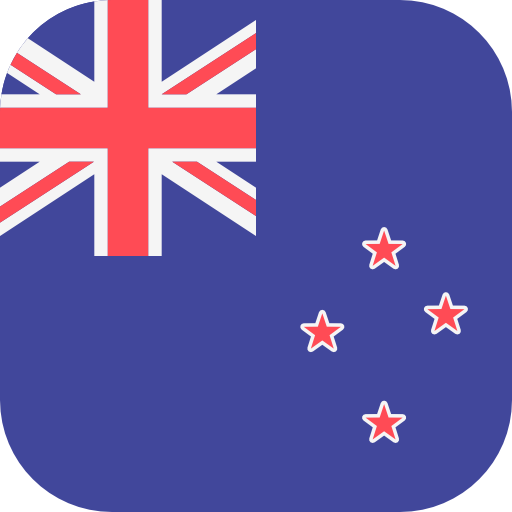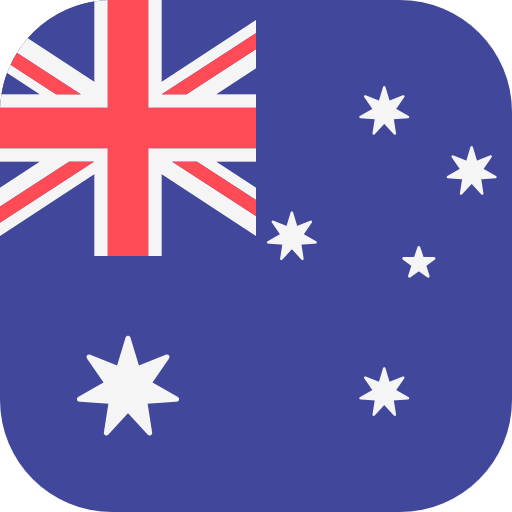Water and infrastructure professionals from across the public and private sectors attended a panel discussion on 4 November, focused on the Government’s proposed water reforms and most particularly the potential impacts on our urban environments.
The wide-ranging reforms of our drinking water, wastewater and stormwater will impact on New Zealanders up and down the country and of all walks of life. To date however, much of the conversation has focused on implications for the rural sector, with limited dialogue on what it all might mean for our cities and urban development areas.
To address this, Kensington Swan and Beca co-hosted - ‘Not a cow to be seen’ - an event on 4 November to discuss the issues facing our cities and regions struggling with growth with a panel of five leading industry experts;
- Andrew Chin - Water Portfolio Manager, Auckland Council
- Ilze Gotelli - Head of Major Developments, Watercare
- Paul Gardiner - Principal Advisor (RMA, Consents and Environment), Wellington Water
- Geoff Mason - Market Manager Water, Fletcher Construction Company
- Roger Seyb - Technical Fellow: Water Resources, Beca.
The event was an opportunity for the audience and panel members to share a broad range of views, and identify key areas of the reforms and urban themes that need greater attention.
Key themes from the panel discussion
- People and communities need a way to maintain close connections to their local waterways, with appropriate engagement with Mana Whenua and an approach that reflects Te Mana o te Wai (that we respect the mana of our freshwater).
- Opportunities exist for greater integration between Councils, the private sector and other parties – with the need for more partnership and accountability.
- In some areas the sense of urgency in confronting water quality is only now becoming apparent, with attention tending to follow specific adverse issues such an E.coli outbreak. It was also noted that people often don’t appreciate how dirty our beaches, lakes and waterways are, even just from stormwater flows.
- Equity is vital in the way the water reforms are implemented in urban versus rural communities - which can have very different land usages, and very different issues. An example was given of consent requirements for agricultural land in Pukekohe - the breadbasket for Auckland - and perceived fairness in relation to cost for land owners versus wider community benefits.
- Equally, all urban areas are not the same, with for example Wellington and Auckland facing different challenges, from each other and from Hamilton, Christchurch and other cities, towns and regions.
- Auckland’s ongoing population growth and urban sprawl presents challenges and issues, with a key tension between urban development, protection of freshwater resources and protection of productive land.
- The reforms must not be too prescriptive in the sense of a ‘lot by lot, form by form’ approach. Requirements need to be flexible, adaptable, and equitable.
- An emphasis on ecological values in our communities needs to be retained. It was noted that around 76 per cent of New Zealand’s 51 indigenous freshwater fish are classified as threatened with or at risk of extinction (see Stats.govt.nz).
- Monitoring proposals are expected to deliver new attributes for monitoring ecosystem health, however they currently appear onerous and it is unclear to what extent they are practicable. The current proposed methods are not resilient or flexible, we need an adaptive approach over time, to allow for new ways and mechanisms to measure and address water quality.
- Climate change is a massive challenge, compounded by aging infrastructure and ongoing growth. The Government’s Zero Carbon Bill will have many flow-on effects in the way large infrastructure projects are built and maintained. Together, we need to do things smarter and more efficiently – which includes a fairer allocation of risk to support infrastructure delivery and support resilience in the industry.
- Investment in urban growth and development is never just for one outcome and needs an integrated approach to housing, water quality, transport, public space and amenities. There also need to be underlying principles of water sensitive urban design and low carbon form embedded in any design process.
- Funding implications were discussed across the board – i.e. what will it all cost, who is going to pay, who should pay, what is covered now, and what is not? Ratepayers and taxpayers will be the two broad groups paying for the reforms, but different parts of the country and in particular smaller communities, are already burdened with a high rates to household income ratio. User pays approaches to water use and smart metering may also provide opportunity.
- We need to think ahead and plan infrastructure investment in the long-term, including costs for future maintenance and upkeep in the face of growth demands and climate change effects. Comment was made that it can often be tempting to put off the costs of today, as a problem to solve tomorrow – and that resilience is never valued until the day after the 100-year flood.
- There are significant projects underway which will have an impact, such as the $1.2 billion Central Interceptor in Auckland. When completed, the Central Interceptor and western isthmus strategy will reduce overflows in central Auckland by up to 80 per cent.
- Watercare also recently announced the Enterprise Model, which sets ambitious sustainability, cost-efficiency and safety targets (40/20/20).
- Beyond built infrastructure, and conversations on the financial and carbon costs, there also needs to be an emphasis on behavioural change and what this might mean.
These improvements to our water environment will – like all infrastructure – require human resources as well as material resources and funding. While it’s an exciting future for many in this space, the “water industry” is under-resourced, but the reforms are expecting Central and Local Government (Councils) to act together to address these resource needs in the next suite of Long Term Plans.
Overall the panel agreed that the current reforms provide less opportunity for flexibility and innovation to address the constraints faced in meeting the reform targets, in areas of high growth. In addition, to meet the challenge of climate change it is necessary to explore low carbon ways to deliver the necessary infrastructure. It was agreed that the conversation needed to change to “what matters”.
For more information on the Government’s proposed water reforms and what this might mean for you, please get in touch with Andrea Rickard or Roger Seyb at Beca, Marija Batistich or Christina Sheard at Kensington Swan, or visit the Ministry for the Environment website.
Background
Below is a high-level overview of various aspects of the water reforms, including an outline of the Three Waters Review, and amendments and proposed changes to National Environmental Standards.
Three Waters Review
The Three Waters Review began in mid-2017 and came in response to the Havelock North campylobacter outbreak in 2016. Of 13,000 residents, up to 5,500 became ill; 45 of whom were hospitalised and, tragically, four are thought to have died from associated causes. It has the stigma of being New Zealand's largest recorded outbreak of waterborne disease.
The review however, is broader than just drinking water – it also covers the interconnected issues of wastewater and stormwater. It is narrower in focus than the separate Essential Freshwater Programme, though there is some overlap. For more, visit Te Tari Taiwhenua | Department of Internal Affairs.
New drinking water regulator
In late September, the Government agreed to establish the new drinking water regulator as an independent Crown entity. This standalone regulator is expected to have the high degree of focus and independence, to provide genuine confidence in New Zealand’s regulatory regime for drinking water. It will also contribute to fresh water outcomes by providing central oversight and guidance for the sector’s wastewater and stormwater regulatory functions.
An Establishment Unit is being created within the Department of Internal Affairs, with support from the Ministry of Health and the Ministry for the Environment. Associated legislation will be introduced to Parliament in the coming months and is expected to be passed in 2020. Here is a link to a Q&A on the new regulator, on the DIA website.
Essential Freshwater Programme
This programme of work has three main objectives:
- Stop further degradation so we see a material improvement in water quality within five years
- Reverse past damage to restore freshwater ecosystems to a healthy state within a generation
- Address water allocation to achieve efficient and fair allocation of abstraction and nutrient discharges, having regard to all interests including iwi
Overall, the intended outcome is a freshwater management system that ensures all dischargers and water users are contributing to the achievement of agreed catchment and regional-level freshwater outcomes. Go here for more on the Government’s freshwater work programme.
Action for Healthy Waterways: a discussion document on national direction for our essential freshwater
The Action for Healthy Waterways discussion document provides an overview of the proposed changes for stormwater and wastewater. It is aimed at stopping further degradation and reversing past damage of New Zealand’s freshwater resources and address water allocation issues.
NOTE: The main Action for Healthy Waterways consultation closed on 31 October 2019, however discussion document notes that detailed wastewater and stormwater proposals will be consulted on at a later date (likely in mid-2020). This is important because while consultation has closed on the main discussion document people can still get a say. Here’s a link for more on the Action for Healthy Waterways.
National Policy Statement for Freshwater Management (NPS-FM)
The draft NPS-FM is proposed as a full replacement of the National Policy Statement for Freshwater Management 2014 (as amended 2017). It is part of a package of proposed freshwater regulations set out in the Action for Healthy Waterways discussion document.
Covering greater ground again, the NPS-FM looks at wetlands and fish passage. It strengthens requirements to manage freshwater in a way that reflects Te Mana o te Wai, and introduces new compulsory values and attributes to be monitored and maintained. Go here for more information the National Policy Statement for Freshwater Management.
Wastewater National Environmental Standards (NES)
There are the National Environmental Standards (NES) for Wastewater Discharges and Overflows. These set requirements and standards for consent conditions for wastewater discharges and minimum treatment standards for nationally applicable wastewater standards. Adherence with regional council requirements under the NPS for Freshwater Management is still required.
Beyond this, are risk management plans which aim to standardise risk reporting and make it easier for the community to understand, and also nationally consistent measures for wastewater. The aim with these measures is to standardise reporting of network performance to provide greater consistency and accountability. For more information visit National Environmental Standards.
Stormwater
Similar to wastewater, is an emphasis on risk management and nationally consistent measures and approach – extending to national guidance on water sensitive design and green infrastructure. Stormwater risk management would see an increased focus on planning for future demand and also supporting the integration of land use planning and three waters servicing.
Some local authorities already have stormwater management plans that consider these risks but the proposal would formalize and standardise what is already emerging as good practice. Again, stormwater operators need to comply with regional requirements under the NPS-FM.
Drinking water NES
Amendments to the Drinking Water NES include setting source water risk management areas, which define the applicable land area. Authorities will also need to define the types of activities to be assessed as potential risk to source waters within the source protection areas, including consent applications that require notification and appropriate controls on development and use of land. Additionally, the NES will be expanded to cover all registered water supplies serving more than 25 people. Here’s a link for more on the Drinking Water NES.
Water Services Bill
It’s not clear exactly what this will cover, but it looks likely to include nationally consistent standards for wastewater and stormwater. It will also likely cover risk management plans for wastewater and stormwater, and cover all aspects of drinking water not covered in the amendments to the Drinking Water NES. As far as timeframes, it is anticipated that the bill will be introduced before the end of 2019 and enacted by mid-2020.
 New Zealand
New Zealand
 Australia
Australia
 Singapore
Singapore